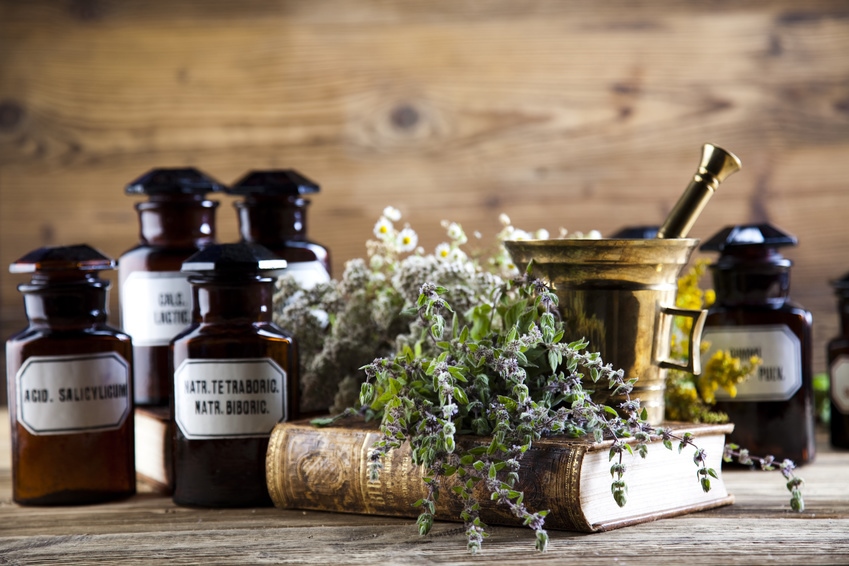Spagyric is the term used to describe a natural healing procedure from the point of view of holistic medicine. In practice, it corresponds to the therapeutic and pharmaceutical implementation of alchemy with the help of herbal medicine. The application of spagyric goes back to pre-Christian times.
According to the holistic concept of natural medicine, body (Sal), soul (Sulphur) and spirit (Mercurius) are regarded as a unity in balance. Three herbal active ingredients can be assigned to these three philosophical principles: The trace elements and minerals correspond to the body, the essential oils and their chemical derivatives to the soul and the carbohydrates to the spirit.
The History of Spagyric
The production of medicines and the corresponding therapy have their origins in the late Middle Ages. It was Theophrastus von Hohenheim (1493-1541), better known as Paracelsus, who coined the term spagyric and also applied this healing method in practice. The terms “alchemy” and “spagyric” were regarded by him as having the same value and were henceforth used synonymously. Paracelsus defined this procedure as the art of “dissolving” (Greek: “spao”) and “reassembling” (“ageiro”). Under this term, this healing method subsequently developed into a medically based medicine that also followed philosophical principles. Johann Rudolf Glauber and Carl Friedrich Zimpel are considered important representatives and pioneers of modern times.
The Unity of Body, Soul and Spirit also Applies to the Manufacturing Process
The principle of unity is also reflected in the preparation of the spagyric essences. All three characteristics of the medicinal plant must be present in the finished spagyric tincture in a balanced proportion to each other. The spagyricists assign a good and a hostile principle to each substance. These opposing essence characteristics are: good – evil, coarse – fine, spiritual – material and healing – poisonous. The separating process in the production of spagyric remedies is called the art of separation (ars spagyrica). Distillation, fermentation, ashing, filtration and extraction have established themselves as the most important methods.
The production of spagyric essences is a complex process. The first step is to crush the fresh and biologically pure medicinal plants. These are then fermented and distilled. The resulting alcohol is assigned to the spirit (=Mercury). The plant components (body=salt) and the sap (soul=sulphur) are dried and gently ashed. This process completes the separation. The resulting ash is then added to the distillate. The purpose of this procedure is to bring together the now purified three principles and to bring about a circulation of the components. Similar to the potentisation known from homeopathy, an energetic increase (transformation) of the tincture occurs. The result of this complex production is a highly effective and refined spagyric remedy. It is remarkable that this preparation is more effective and more healing than the original substances from which it was obtained. In this way, a detoxified remedy is available which, in accordance with the principle of spagyric, has an equally positive influence on the physical, mental and spiritual levels.
The Fields of Application of Spagyric
Since spagyric is geared towards holistic treatment, it can be used to treat a wide range of clinical pictures, both physical and psychological: The main areas of application are:
- Gynaecology
- Pain therapy
- Gastrointestinal complaints
- Detoxification of the organism
- Infections and their accompanying symptoms
- Skin diseases and hair problems
- Diseases of the urogenital system
- Cardiovascular diseases
- Psychological disorders
In my practice, spagyric is mainly used as an accompanying therapy to conventional healing methods, primarily in the field of gynaecology. However, my patients also benefit from this alternative natural healing method in cases of anxiety, restlessness, exhaustion and sleep disorders. In a detailed consultation I analyse your complaints and work out your individual healing and medication plan. Please call me for an appointment without obligation.


Leave a Reply